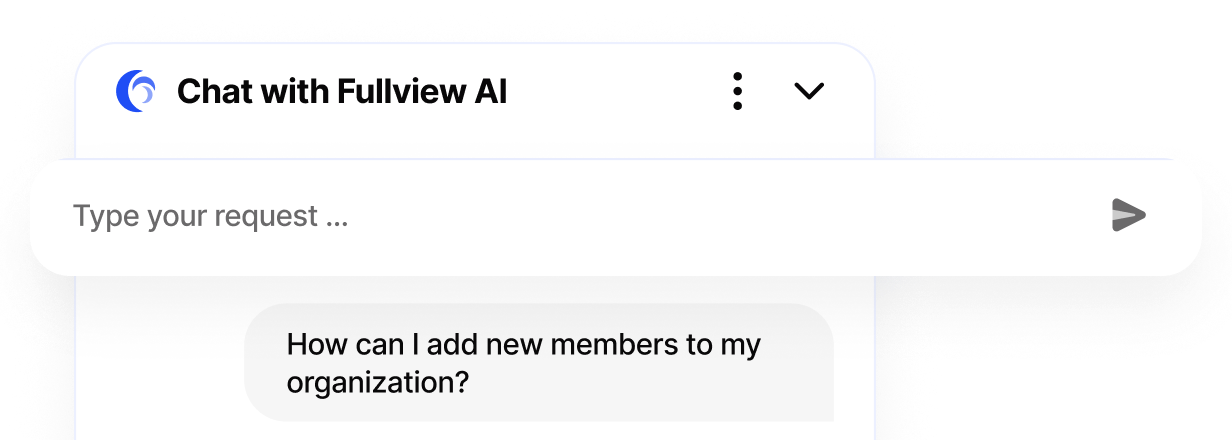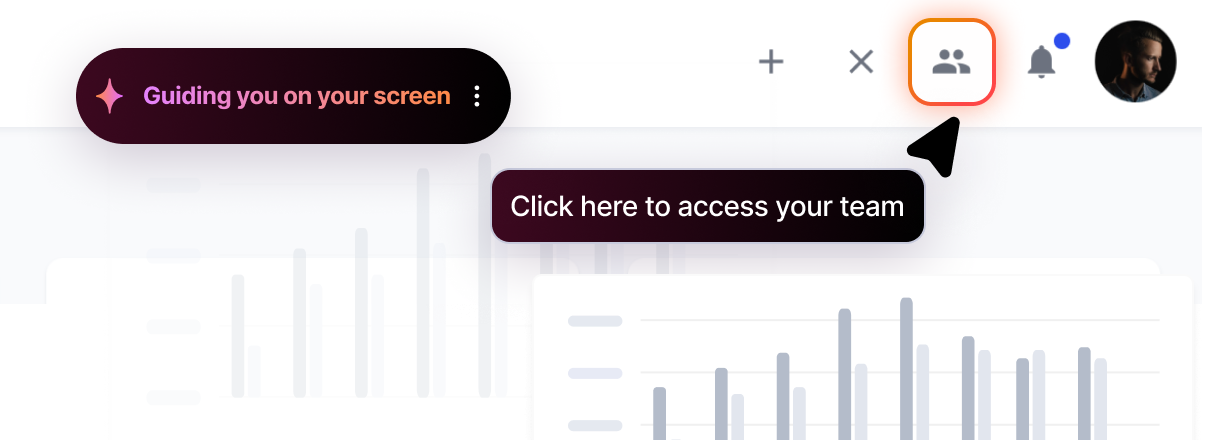73% of US adults agree on one thing: valuing their time is the most crucial part of good online customer service.
Clearly, every second counts.
And when you shave those seconds off of Average Handle Time (AHT), it means happier customers and higher satisfaction.
This post won't be covering the definition of AHT. If you want to dive into the nitty-gritty of this crucial metric, you should read our detailed guide on what Average Handle Time is and why you need to track it.
Instead, it aims to unravel 31 potent strategies to prune your AHT, ensuring happy customers and a happier bottom line. By the end, you'll have a laundry list of practical strategies you can begin using today.
31 practical strategies to optimize Average Handle Time (AHT)
We've categorized these tips into groups — that way, they're easier to understand and implement in your customer support practice, piece by piece:
- Optimizing call handling
- Enhancing IVR
- Staff management and training
- Knowledge and information management
- Efficient communication
- Contact center environment
- Customer engagement and experience
Optimizing call handling
1. Use cobrowsing to sidestep email and chat
Support tickets can get incredibly time-consuming when they involve guiding a user through technical troubleshooting steps.
Cobrowsing lets agents do it themselves. Here's how it works:
- The agent initiates a call with the user within the app.
- Cobrowsing software allows them to take control of the user's screen.
- The agent can solve the problem themselves, speeding up AHT by magnitudes.
Calls become more efficient because no time is wasted over email and chat confusion — a massive win for tricky technical support.
2. Start calls strong with session replays and console logs
Kickstart calls by harnessing session replays and console logs to grasp the crux of the customer’s issue.
- Session replays: Auto-recorded user sessions from within your app will help your agents pinpoint the steps the user took before the problem. The additional context means they can hop on a cobrowsing call and troubleshoot immediately.
- Console logs: Digging into console logs can help an agent directly identify what went wrong on the backend. Console errors, warnings, system specs, network data, and browser information — together, they provide a wealth of information that can cut issue diagnosis time in half.
When customer support agents are equipped with these tools, they can hit the ground running, without spending time asking for repeated details of the issue.
3. Prevent awkward silences during calls
Time spent in silence will a) increase AHT and b) is, let's face it, unpleasant for all parties involved. Here are three practical tips to avoid it:
- Active listening: Teach your agents techniques like summarizing, verbal nods, and probing questions to keep the conversation flowing.
- Empathy training: Train agents in actively empathizing with customers by mirroring sentiments.
- Small talk & rapport building: Data from session replays and console logs will free up time for introductions and rapport.
4. Agents should lead calls
Customers want to engage with human agents who can think on their feet. Ensure the team has a firm grasp of your product and can lead customers through a dialogue.
5. Use AI agents to supplement human work
Customer support can become overwhelming when users need step-by-step guidance through your app’s features. Fullview's AI agent solves this. Here's how it works:
The AI agent offers real-time, in-app assistance. It understands your app’s interface and can guide users through tasks by interacting with the app—clicking, typing, and scrolling as needed.The agent handles simple and complex tasks autonomously, reducing response time significantly. Support becomes more efficient because the agent eliminates back-and-forth communication, providing fast, hands-on assistance with minimal involvement from your team—making it ideal for both basic and complex support.
Enhancing IVR (Interactive Voice Response)
Improving IVR is pivotal. It gives customers a feeling of control and enables agents to gather more information at the beginning of a call.
Why does it matter for AHT? Because the more issues IVR can solve, the less time customers spend on hold waiting for an agent.
6. Tuning up Interactive Voice Response (IVR)
A well-oiled IVR is your first line of defense in keeping AHT in check. Evaluating and enhancing its efficiency is like rolling out a red carpet for swift resolutions.
7. Optimizing the flow of IVR
Review and compare call histories and FAQs to understand how customers navigate through the system. If a question arises often, answer it before it's even asked.
Staff management and training
People are the cogs that keep the wheels of customer support spinning smoothly.
Want to know how to reduce AHT in a call center? A skilled and knowledgeable workforce will be one of your strongest levers.
8. Train staff proactively
Training isn't just for new staff. Agents should get regular updates on product and industry knowledge to keep them well-equipped for customer inquiries.
9. Gleaning from Low AHT Calls
There's no better way to teach than via example. Let agents learn from high-performing peers by listening to recordings of low AHT calls.
10. Create cheat sheets for call handling
Resources like cheat sheets will move mountains for call handling. Cover the most common questions and pain points to streamline customer interactions.
11. Hiring the right agents
Hiring agents who are a good fit for the job is crucial. Look for qualities like empathy, problem-solving skills, and eagerness to learn.
12. Appoint champions among staff
'Champions' are high-performers with consistently stellar results. Have them share best practices for new hires to set the bar high.
13. Promote the right habits
Performance-enhancing habits include:
- Being courteous
- Avoiding lengthy hold times
- Keeping track of common issues that can be quickly resolved
These might seem small. But at scale, it's the sum of small improvements that leaves customers feeling satisfied.
14. Set up a buddy system
Onboarding can be intimidating for new hires. Pair them up with each other or with a slightly more experienced agent to speed up the learning curve and boost their confidence.
15. Create a mentorship program
Mentorship programs allow for consistent, personalized support for newer employees. Having a veteran staff member guide them through the ropes promotes smoother transitions and faster learning.
16. Call recording self-assessment
Agents should get the opportunity to review their calls. Self-assessments enable agents to learn from their mistakes, improve on strengths, and gain confidence in their abilities.
Knowledge and information management
Information is power, especially in the dynamic realm of customer support. This section sheds light on how to use knowledge management to expedite issue resolution and lower AHT.
17. Keep customer profiles up-to-date
Having updated customer profiles on hand allows agents to access pertinent information quickly. This saves time, keeps the user from repeating information, and frees up bandwidth to focus on the next ticket.
18. Utilize a knowledge base
A well-organized knowledge base is an invaluable tool for reducing AHT. Agents can easily search for solutions to common issues, saving time and improving efficiency.
19. Implement a customer feedback system
Collecting feedback from customers can help identify recurring issues and areas for improvement. This insight can update the knowledge base and reduce AHT in the long run.
20. Encourage agents to document solutions
Have your agent document successful (and unsuccessful!) issue resolutions in the knowledge base. Not only does it save time for future similar issues, but it also boosts collaboration among team members.
21. Keep information accessible
Agents should have easy access to all necessary tools and information, whether it be through a centralized system or quick shortcuts. This eliminates unnecessary steps and reduces AHT.
Efficient communication
Communication is the bedrock of customer service — no surprises there. But it takes a high level of detailed work to ensure it's both effective and efficient.
22. Encourage customer self-service
Empowering customers to solve their own issues through self-service options can significantly reduce AHT. This means offering:
- An easily navigated website
- FAQs
- Resources like tutorials and user manuals.
23. Prioritize quality over AHT
Ultimately, quality customer service should be the priority. Encourage agents to take the necessary time to provide thorough and helpful solutions to customers, even if it means slightly longer AHT.
24. Develop customer personality profiles
Understanding customer personas will help agents tailor their communication style, leading to quicker resolutions. Include strategies, language, and best practices for each persona in agent training and cheat sheets.
25. Teach efficient communication strategies
Micro-communication strategies like active listening, summarization, and effective questioning can all help decrease AHT. Train agents in these techniques to improve their communication skills.
26. Cobrowsing > chat > email
As discussed earlier, cobrowsing makes solving technical issues much faster. But it's also a superior customer experience.
With a cobrowsing session, customers can:
- Show agents their issues in real-time.
- Have an agent point out the solution (and save the customer clicks and frustration as they try to figure things out themselves).
- Get immediate feedback on any changes made.
It also personalizes the customer service experience, as agents can see the customer's screen and understand their issue better.
This speeds up troubleshooting exponentially compared to a phone call, email, or chat session.
Contact center environment
Your contact center environment is the theater of operations — if the dashboards and procedures aren't easy to use, AHT will suffer.
A thorough assessment and the right tweaks here can propel you towards your AHT reduction goals.
27. Assessing the contact center ecosystem
A thorough health check of the contact center ecosystem can unveil bottlenecks and pave the way for efficiency enhancements.
28. Improving queue display management
A cluttered, disorganized queue display management system can slow down response times.
Make sure the queue is organized to prioritize urgent requests and simplify responses. This could include
- categorizing queues based on issue severity
- utilizing auto-routing to assign queues to the most appropriate agents
- implementing time-based routing to avoid long wait times for customers
Customer engagement and experience
It seems obvious but it's true: engaged customers are easier to assist. Honing customer engagement can result in a win-win for both AHT and customer satisfaction.
29. Nurturing customer engagement
A well-informed customer can significantly trim down the AHT. Incorporating data from their session replays and console logs will help you keep them up to speed on:
- Why they're facing the issue
- How to troubleshoot
- What resources are available to them
30. Using visual aids during support sessions
Cobrowsing and screen-sharing tools can provide an immersive customer experience.
When users see an agent solving their issue in front of them, several positive things happen all at once:
- They feel more engaged and supported because they can witness the steps being taken to solve their issue
- They feel more confident in your ability to help them as you guide them through the resolution process
- They may even learn something new, reducing the likelihood of similar issues occurring in the future
31. Invest in community building
Customers can solve their own issues by engaging with other users in a community forum or on a social media page. This means user-generated content can resolve certain level 0 or 1 support queries.
Lower AHT for happier customers
If you forget about this article entirely, remember these three key takeaways:
- Session replays and console logs can significantly reduce Average Handle Time (AHT) by providing agents with context and reducing time spent diagnosing issues.
- Enhancing IVR systems and cobrowsing can streamline the support process by removing confusion and improving the customer experience.
- Regular cross-training of agents and structured troubleshooting guides can ensure calls are handled efficiently and effectively.
Trimming the Average Handle Time (AHT) isn’t about cutting corners, but optimizing the right processes.
Reducing AHT leads to efficient service and satisfied customers — both crucial for the long-term growth and success of any business.
Sources used:
Sources last checked on date: 11-01-2023


.png)





.webp)
